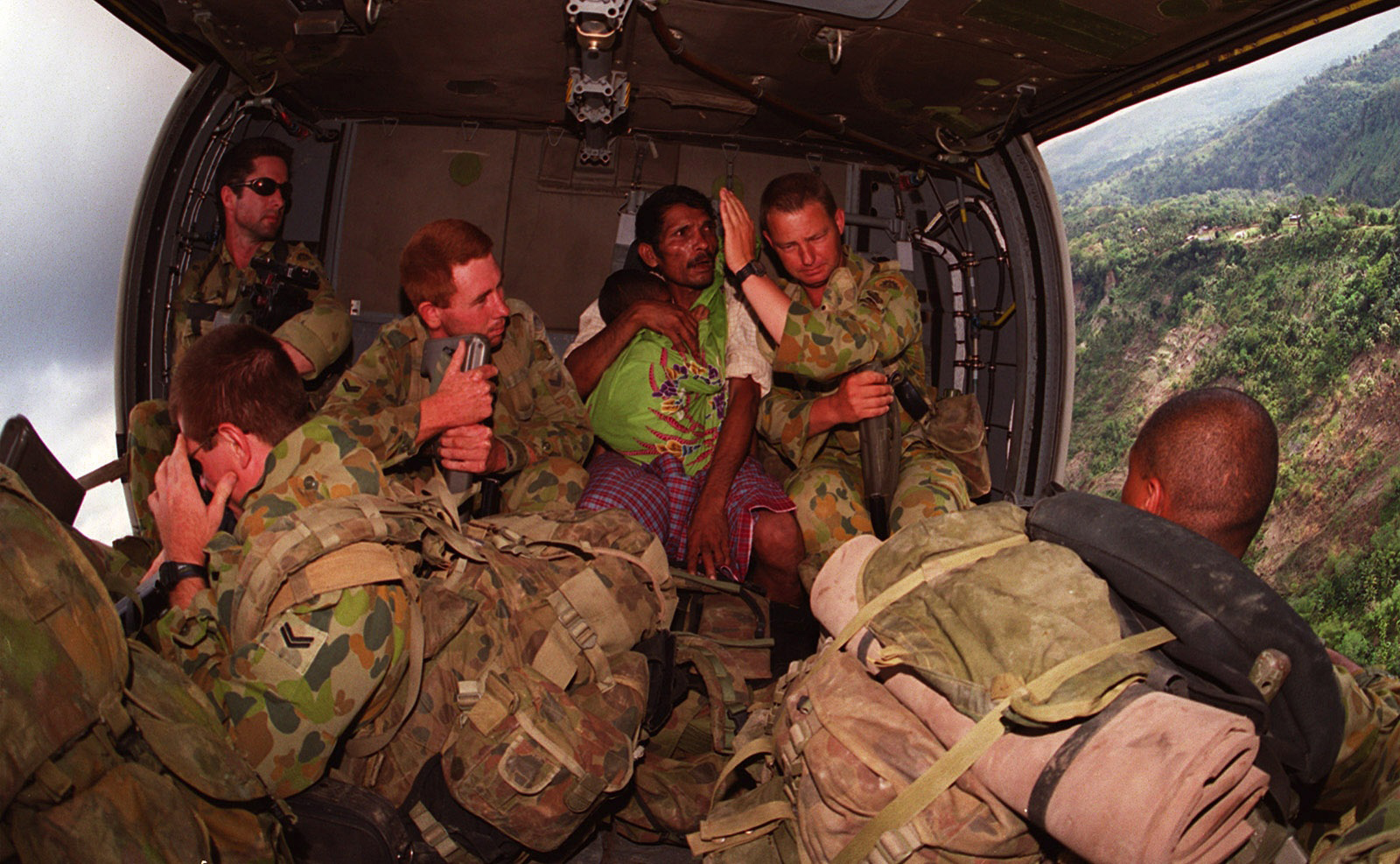
Al Palazzo’s post ‘A defence dividend need not become a defence liability’ raises some important points and provides sage advice to those responsible for the management of the Defence budget. One of the critical points in his argument is set around the fact that the Australian way of war is fundamentally ‘expeditionary’.
But what is meant by the term expeditionary? Especially in relation Dr Palazzo’s call for the ADF to maintain core expeditionary capabilities in order to ‘retain [its] utility to Government’.
Interestingly, while Dr Palazzo identifies expeditionary as at the heart of the Australian way of warfare you won’t find any mention of it in the 2002 ADF publication The Australian Approach to War Fighting (PDF), nor is there any joint ADF expeditionary doctrine. The Army’s publication The Fundamentals of Land Warfare talks about the ADF being prepared ‘to provide a versatile, adaptable and agile expeditionary force’ but it provides no definition of the term. Meanwhile the Air Force views almost everything that it does as expeditionary in nature to the point where one senior RAAF officer has even described its participation in air shows as expeditionary.
This is one of the main problems with expeditionary as a concept—it means different things to different people. As the Navy’s Semaphore publication pointed out in 2010 ‘currently, many terms [in the ADF] are common, but are used differently by each service, and even an agreed joint definition of fundamental terms such as expeditionary operations and littoral is lacking.’ The result is that critics of expeditionary operations dismiss the term as ‘little more than a glittery label for an untidy ragbag of messy but undemanding things that military forces have always had to do’.
What’s fundamentally needed is a clear understanding of what ‘expeditionary’ means in relation to strategy and operations. Only then will it become clear what type of core capabilities need to be maintained. The confusion is part of a long-standing debate over an expeditionary versus continental (or defence of Australia) strategy. In this instance, expeditionary is associated with sending Australian forces to fight in conflicts far from home and the debate often revolves around whether such deployments are in our strategic interest or are part of a tradition of ‘fighting other peoples wars’.
When we look at how Australia has actually sent its forces far away, things become a bit clearer. More often than not, we’ve provided niche single service based force elements to fight in coalitions. Generally these forces have not been undertaking expeditionary operations. Modern expeditionary operations are something altogether different—the current deployment to Afghanistan being a case in point.
Maritime strategist Professor Geoffrey Till has produced a good working definition of modern expeditionary operations. His list of interconnected criteria contains a number of elements but the key one is that true expeditionary operations involve forces that are self-contained and self-sustaining; they are tailored to the task, portable, highly mobile and (hopefully) decisive. Another key factor is the inherently joint (multi-service) nature of these operations, and that they are usually undertaken at short or very short notice. The British Task Force sent to the Falklands, comprising elements of the Royal Navy, the Royal Marines and with its own air cover is a good example.
The irony is then that while an expeditionary strategy has seen Australia consistently deploy her forces overseas to distant theatres, they generally don’t undertake expeditionary operations in the process. The true expeditionary operations have been much more likely to occur closer to home. Historically that includes the Australian Naval and Military Expeditionary Force’s capture of German New Guinea in 1914 and operations in the South West Pacific Area in 1943 and 1945. The only recent ADF expeditionary operation was leading the INTERFET mission in East Timor in 1999–2000. That operation proved exceptionally difficult given the size and capabilities of the ADF at the time.
To undertake these expeditionary operations, the core capabilities that the ADF needs to maintain or develop are high readiness, strategic mobility, an operational level deployable headquarters, modular force packaging, lean and highly capable logistics support and the ability to sustain its force. Progress has been made in these areas; the Army will develop rotational expeditionary forces under Plan Beersheba and of course the purchase of C-17s and the Canberra Class amphibious ships will provide lift and insertion capabilities.
Maintaining these capabilities as part of a balanced joint force capable of operating in a maritime environment will give the government the option of undertaking expeditionary operations in the near region or, if in the national interest, to make niche single service contributions to coalition operations in distant theatres. The problem is that equipping and developing a joint force for expeditionary operations is not easy and it is generally very costly; a major issue in the current fiscal climate. As US Marine Corps Lieutenant General John Rhodes, has noted ‘there are high barriers and higher standards to get to into the [expeditionary] playing field, and you don’t buy a ticket for this contest with mere rhetoric or press releases’.
Peter Dean is a fellow at the Strategic and Defence Studies Centre at the ANU and teaches the expeditionary operations module at the Australian Command and Staff College. Image courtesy of Department of Defence.

